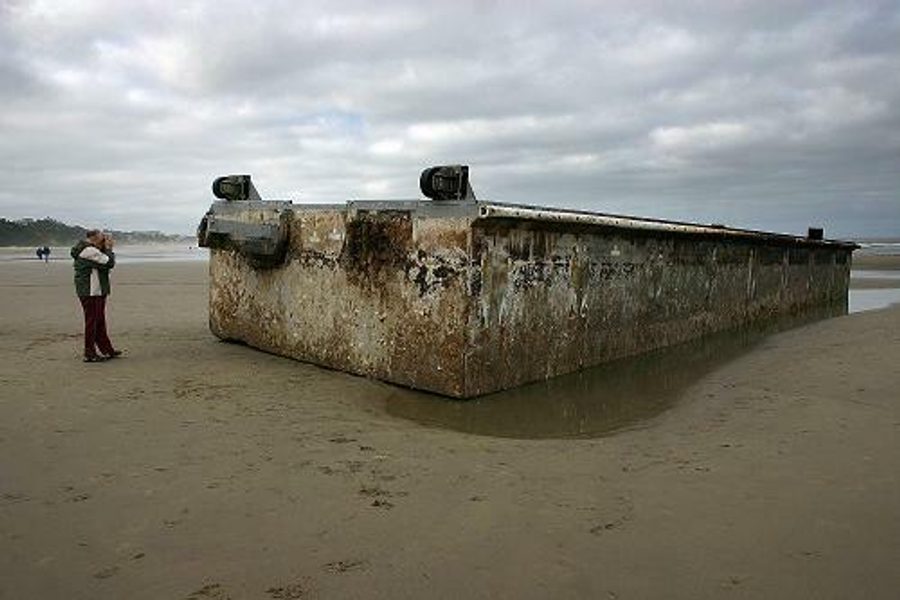
This afternoon, the state of Oregon will cut up and remove a 66 feet by 19 feet dock that drifted onto Agate Beach at the beginning of June. After it was dislodged by the tsunami that devastated Japan on March 11, 2011, the dock voyaged across the Pacific for more than a year before hitting ground. However, it wasn’t detected until it was visible from the shoreline on June 4, 2012.
The dock originally came from the city of Misawa in northern Japan, one of four cast asunder in the storm (the other three are still drifting about). No radiation was detected, but its removal was prompted by the large amount of non-indigenous sea life the dock carried with it across the ocean. Within days of the dock’s landing on U.S. soil, clean-up crews had removed all attached sea creatures and sterilized the structure with blowtorches.
“It looks like there is a very, very abundant community of Asian organisms that have been floating in the ocean for a year and are intact and alive on this float,” Oregon State University scientist John Chapman told The Oregonian. “Everybody is worried because the majority of them do not live on this coast.”
More remains from the tsunami are headed toward the United States. An estimated 5 million tons of debris was swept from the Japanese coast, 70 percent of which is presumed to have sunk shortly after taking to the sea, which leaves 1.5 million tons afloat in the Pacific.
The National Oceanic and Atmospheric Administration (NOAA) has been modeling where the debris might be and tracking reported sightings. Perhaps the most dramatic casualty to appear so far was an unmanned Japanese fishing vessel that sailed into the Gulf of Alaska this spring. The Coast Guard promptly destroyed the vessel with cannon fire.
The tsunami wreckage is being swept around the ocean by the North Pacific Gyre, a large clockwise-moving ocean current that swirls the Pacific down the North American coast and up the Asian coast. This is the same force that holds together the Great Pacific Garbage Patch--as much as 100 million tons of plastics and other waste pushed together by the gyre to create what is in effect the world’s largest landfill. The plastics have begun to break apart into tiny pieces, creating a sort of toxic sludge that then works its way into the stomachs of fish and other forms of sea life.
Because most of the debris is broken into tiny fragments suspended underwater, the patch is not visible from space, so no one knows exactly how large it is, though comparisons to the size of Texas are often made. What is known, however, is that it has grown more than 100 times in size since the 1970s.
As for the failure to clean it up, it’s not that there are conflicting interests or a lack of will but that there doesn’t seem to be a viable solution.
“You need a net with very fine mesh and then you’re catching baby fish, baby squid—everything,” Scripps graduate student Miriam Goldstein told CNN this spring, discussing how to remove the waste. “For every gram of plastic you’re taking out, you probably take out more or less the equivalent of sea life.”
Isaac Dalke is a summer 2012 In These Times editorial intern.



